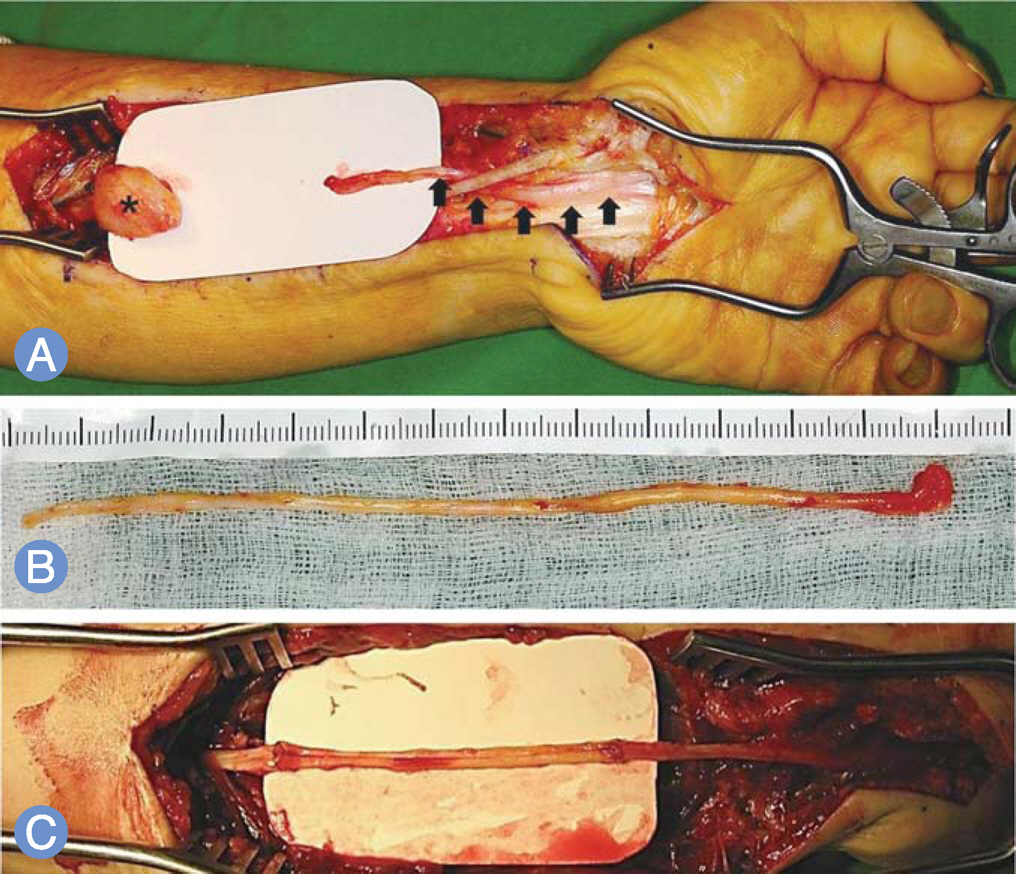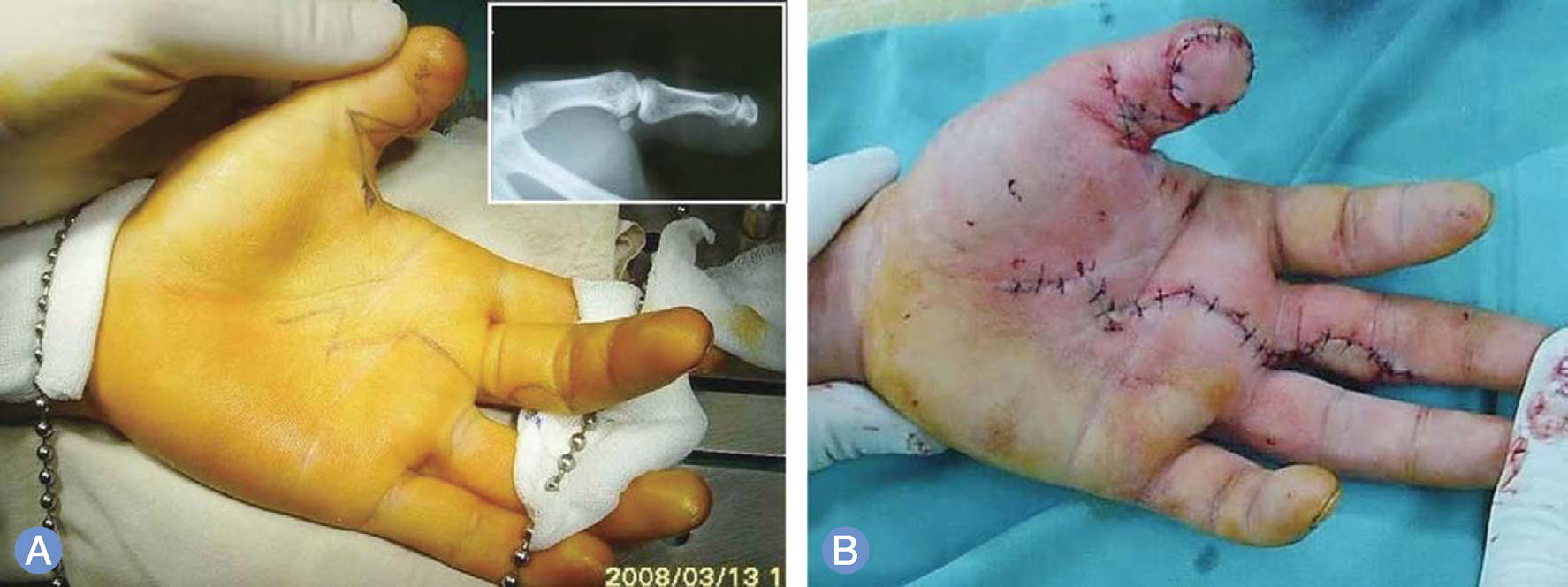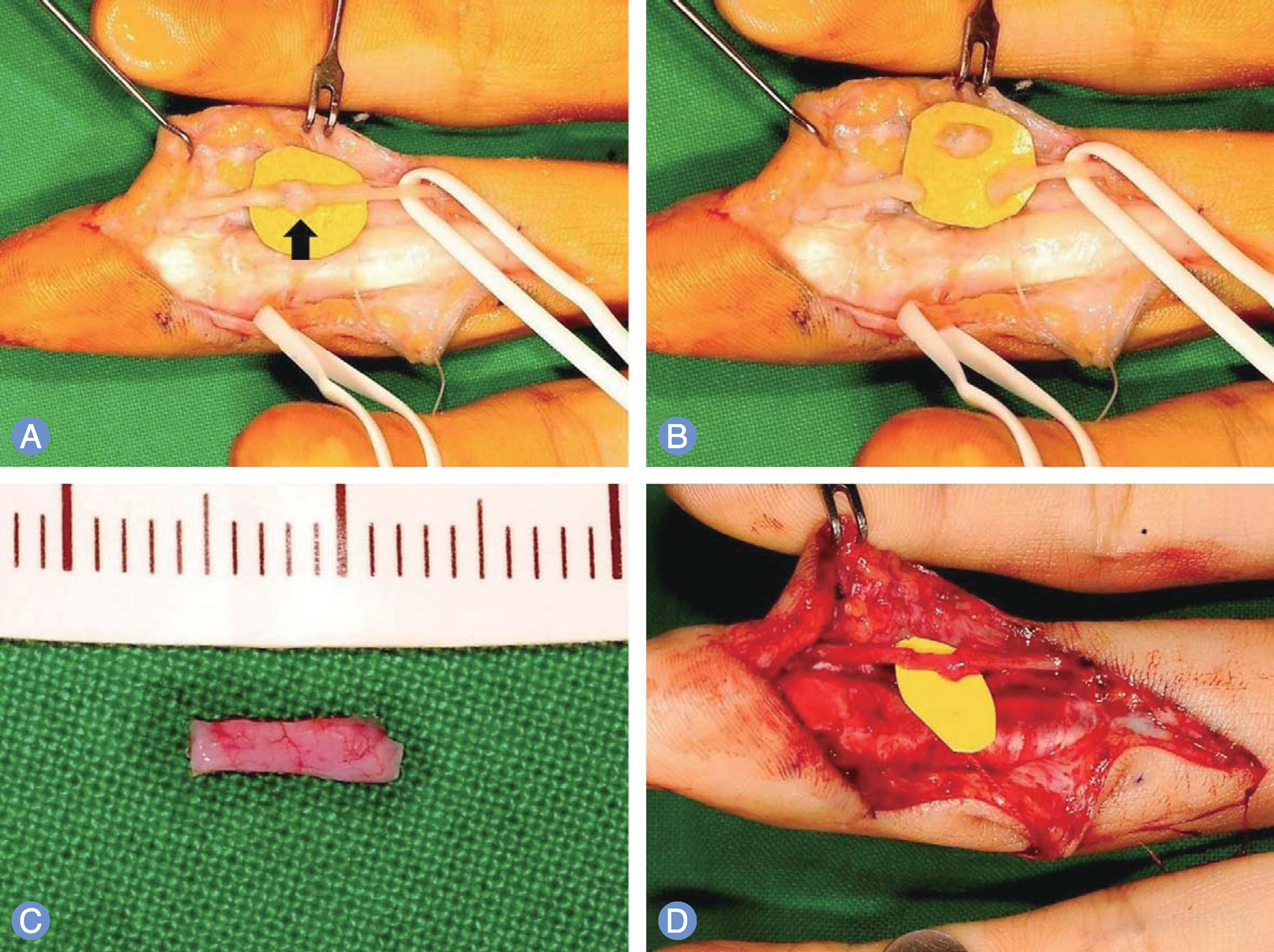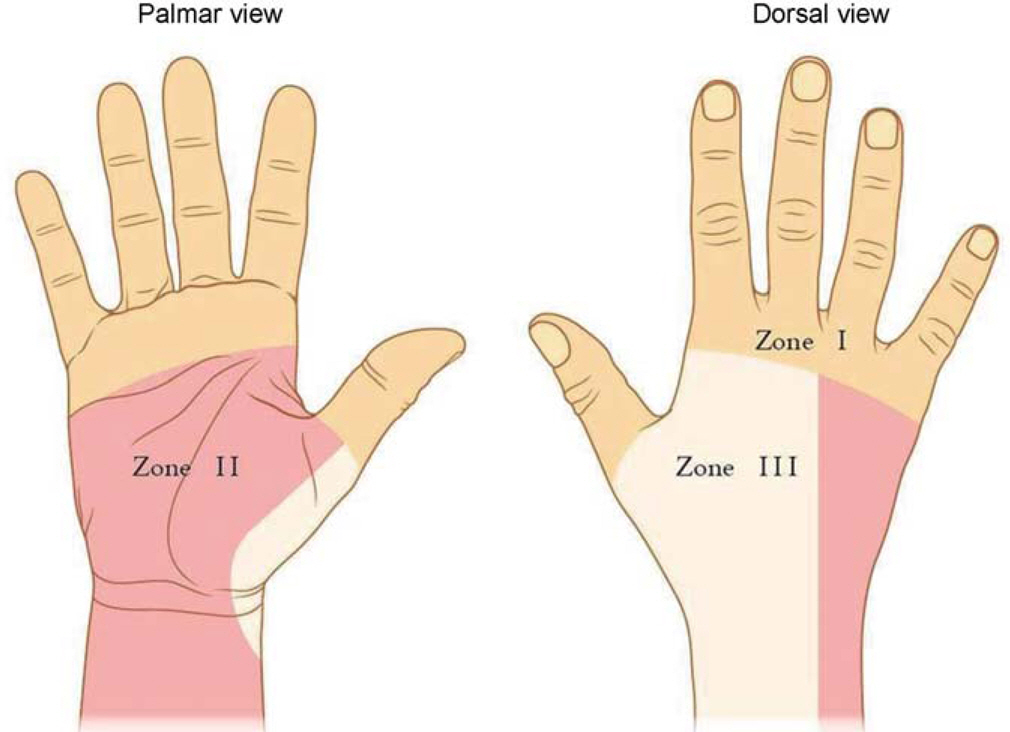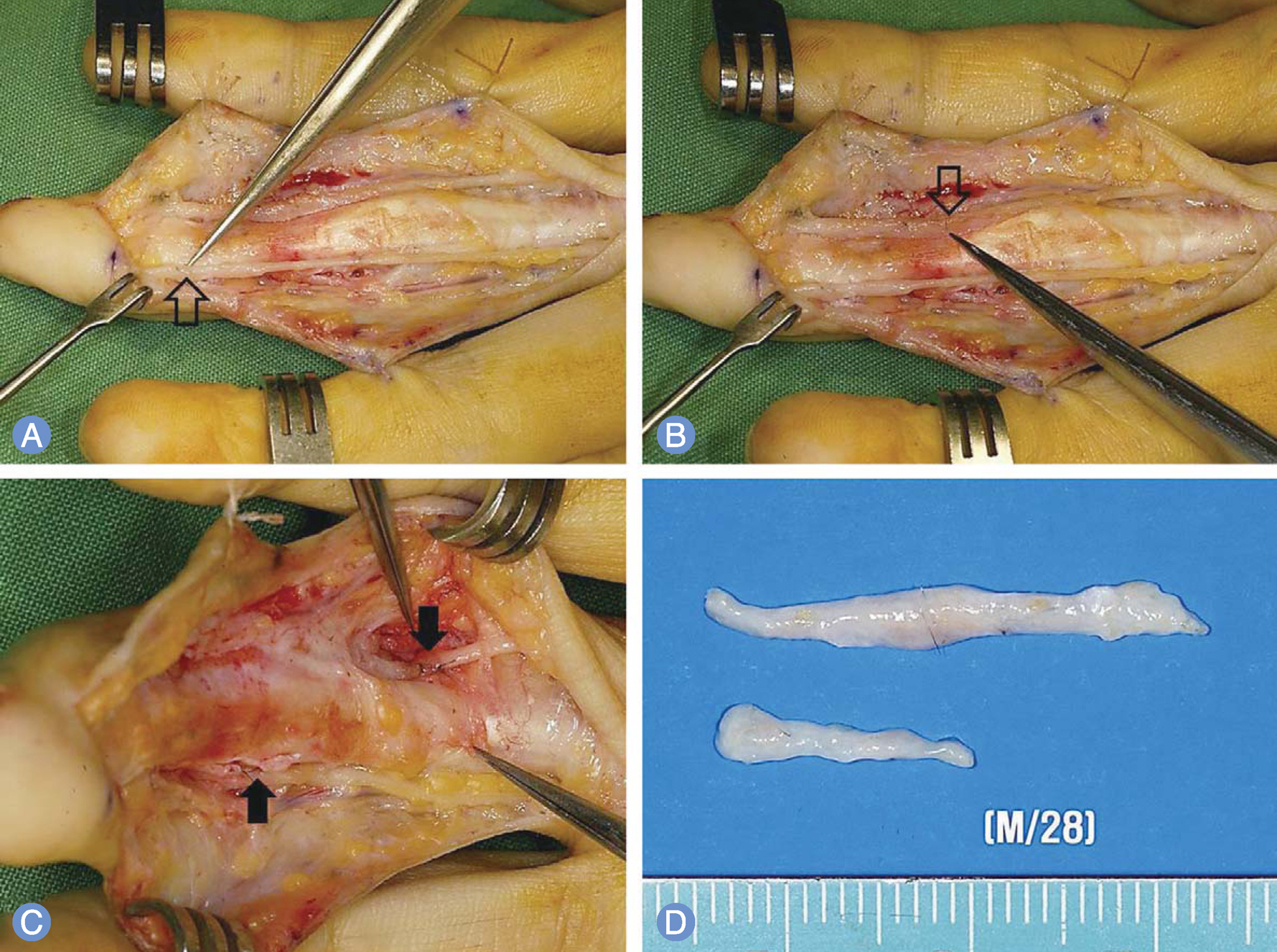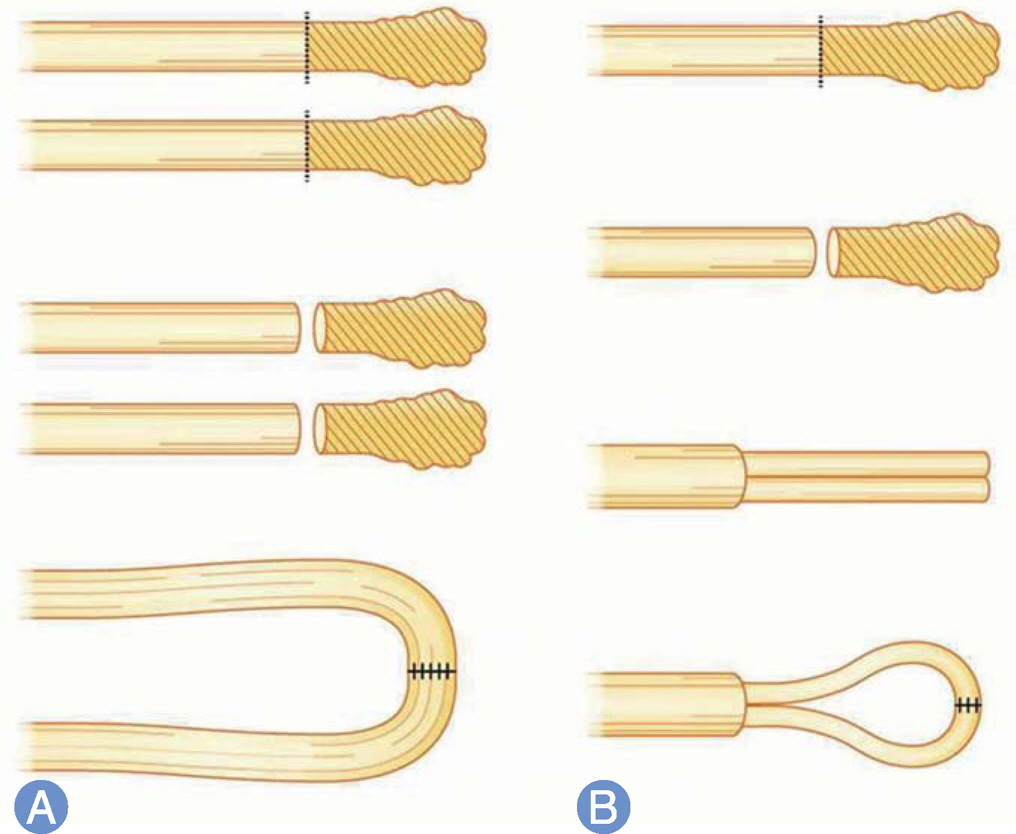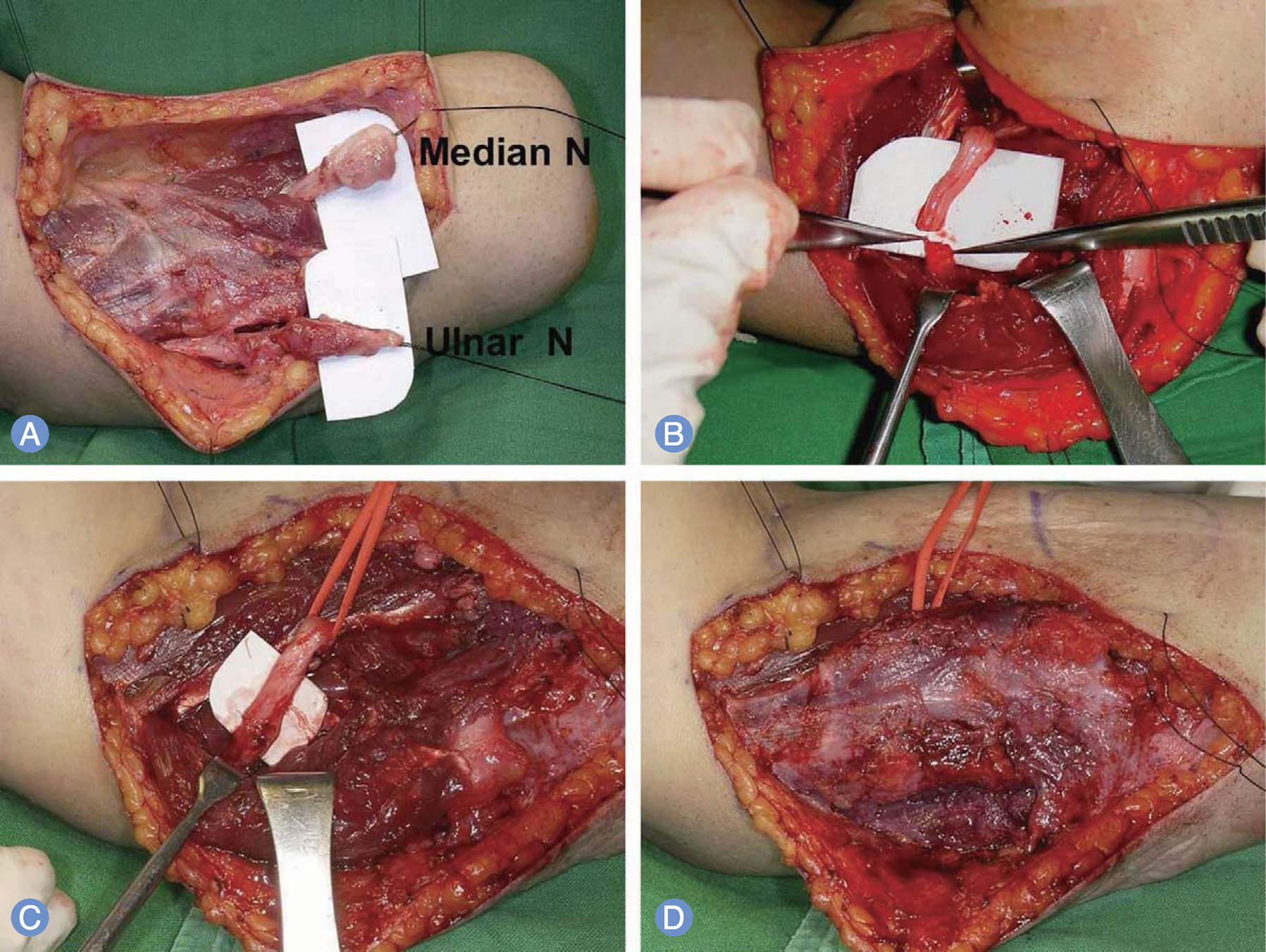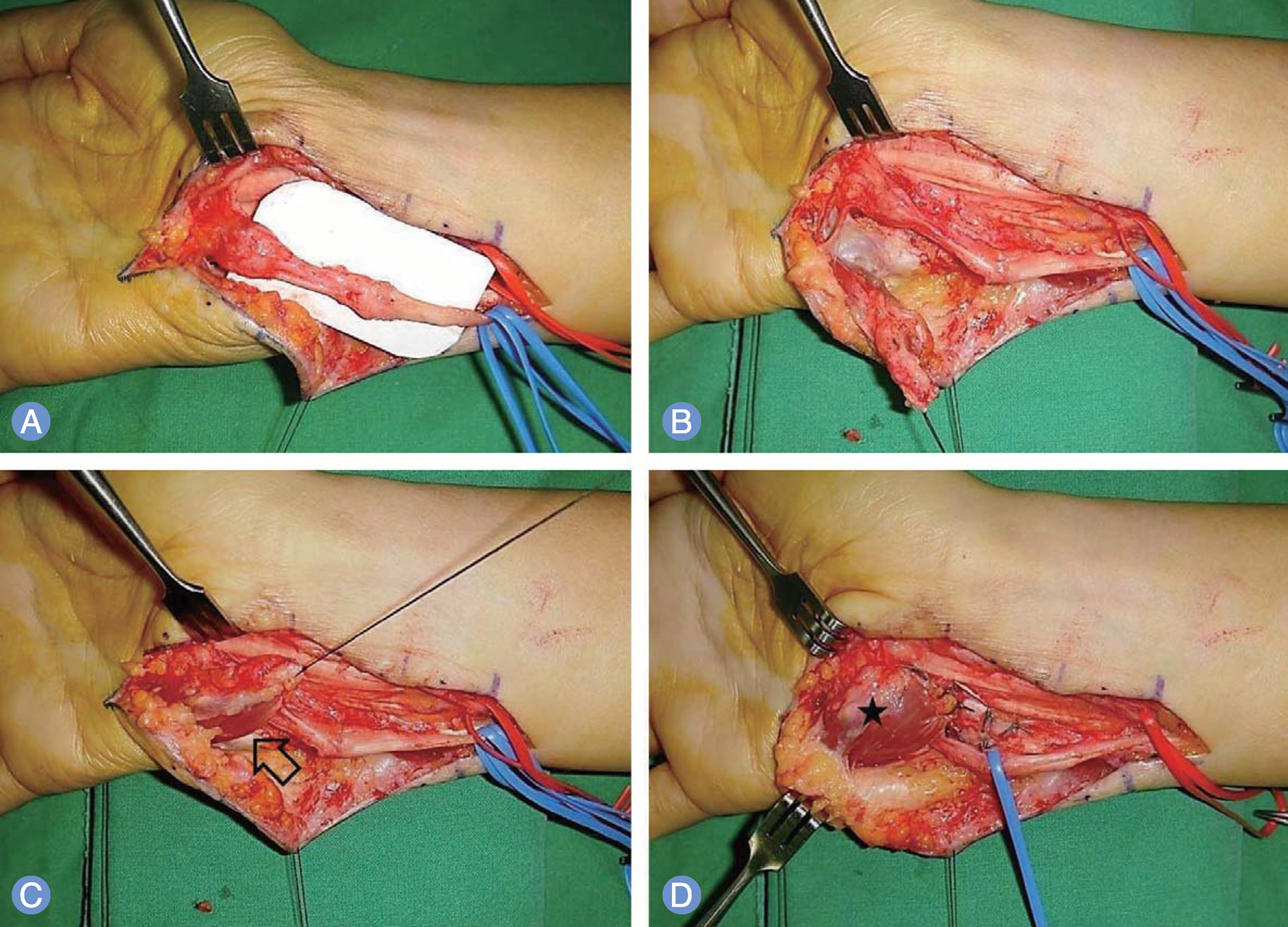J Korean Soc Surg Hand.
2014 Dec;19(4):209-220. 10.12790/jkssh.2014.19.4.209.
Treatment of the Traumatic Neuroma
- Affiliations
-
- 1Department of Orthopedic Surgery, Uijeongbu Paik Hospital, Uijeongbu, Korea.
- 2Department of Orthopedic Surgery, Bucheon St. Mary's Hospital, The Catholic University of Korea, Bucheon, Korea. jikocmc@naver.com
- KMID: 1896912
- DOI: http://doi.org/10.12790/jkssh.2014.19.4.209
Abstract
- Formation of the traumatic neuroma results from abnormal nerve regeneration following a peripheral nerve injury. Numerous treatment options have been described. However, there is no one way that is completely effective in the management of these peripheral neuromas. Prevention is best. It is important to maximize nonsurgical management, including pain management and physiotherapy. At the time of surgery, definitive neuroma resection and tension-free repair or coverage will provide the least amount of subsequent nerve irritation.
Keyword
Figure
Cited by 2 articles
-
Neuroma of the Dorsal Rami in the Back and Its Surgical Treatment: A Case Report
Joonho Lim, Seokchan Eun
Arch Hand Microsurg. 2020;25(1):67-70. doi: 10.12790/ahm.19.0047.Unusual Presentation of Traumatic Neuroma of the Medial Plantar Nerve after Deep Laceration Mimicking a Foreign Body Granuloma: A Case Report
Seung Hun Woo, Tae Woo Kim, Jung Yun Bae
J Korean Foot Ankle Soc. 2017;21(4):174-178. doi: 10.14193/jkfas.2017.21.4.174.
Reference
-
1. Brogan DM, Kakar S. Management of neuromas of the upper extremity. Hand Clin. 2013; 29:409–20.
Article2. Watson J, Gonzalez M, Romero A, Kerns J. Neuromas of the hand and upper extremity. J Hand Surg Am. 2010; 35:499–510.
Article3. Birch R. Nerve repair. Wolfe SW, Pederson WC, Hotchkiss RN, Kozin SH, Cohen MS, editors. Green's operative hand surgery. 6th ed. New York: Elsevier Health Sciences;2010. p. 1035–74.
Article4. Treede RD, Jensen TS, Campbell JN, et al. Neuropathic pain: redefinition and a grading system for clinical and research purposes. Neurology. 2008; 70:1630–5.
Article5. Wall PD, Gutnick M. Ongoing activity in peripheral nerves: the physiology and pharmacology of impulses originating from a neuroma. Exp Neurol. 1974; 43:580–93.
Article6. Lundborg G. A 25-year perspective of peripheral nerve surgery: evolving neuroscientific concepts and clinical significance. J Hand Surg Am. 2000; 25:391–414.
Article7. Gidal BE. New and emerging treatment options for neuropathic pain. Am J Manag Care. 2006; 12:S269–78.8. Rosenstock J, Tuchman M, LaMoreaux L, Sharma U. Pregabalin for the treatment of painful diabetic peripheral neuropathy: a double-blind, placebo-controlled trial. Pain. 2004; 110:628–38.
Article9. Smith JR, Gomez NH. Local injection therapy of neuromata of the hand with triamcinolone acetonide. A preliminary study of twenty-two patients. J Bone Joint Surg Am. 1970; 52:71–83.10. Gruber H, Glodny B, Kopf H, et al. Practical experience with sonographically guided phenol instillation of stump neuroma: predictors of effects, success, and outcome. AJR Am J Roentgenol. 2008; 190:1263–9.
Article11. Herndon JH, Eaton RG, Littler JW. Management of painful neuromas in the hand. J Bone Joint Surg Am. 1976; 58:369–73.
Article12. Boldrey E. Amputation neuroma in nerves implanted in bone. Ann Surg. 1943; 118:1052–7.
Article13. Lim KB, Kim YS, Kim JA. Sonographically guided alcohol injection in painful stump neuroma. Ann Rehabil Med. 2012; 36:404–8.
Article14. Davies E, Pounder D, Mansour S, Jeffery IT. Cryosurgery for chronic injuries of the cutaneous nerve in the upper limb. Analysis of a new open technique. J Bone Joint Surg Br. 2000; 82:413–5.15. Nath RK, Mackinnon SE. Management of neuromas in the hand. Hand Clin. 1996; 12:745–56.
Article16. Nunley JA, Ugino MR, Goldner RD, Regan N, Urbaniak JR. Use of the anterior branch of the medial antebrachial cutaneous nerve as a graft for the repair of defects of the digital nerve. J Bone Joint Surg Am. 1989; 71:563–7.
Article17. Malizos KN, Dailiana ZH, Anastasiou EA, Sarmas I, Soucacos PN. Neuromas and gaps of sensory nerves of the hand: management using vein conduits. Am J Orthop (Belle Mead NJ). 1997; 26:481–5.18. Guse DM, Moran SL. Outcomes of the surgical treatment of peripheral neuromas of the hand and forearm: a 25-year comparative outcome study. Ann Plast Surg. 2013; 71:654–8.19. Tupper JW, Booth DM. Treatment of painful neuromas of sensory nerves in the hand: a comparison of traditional and newer methods. J Hand Surg Am. 1976; 1:144–51.
Article20. Dahlin LB, Lundborg G. Use of tubes in peripheral nerve repair. Neurosurg Clin N Am. 2001; 12:341–52.
Article21. Sood MK, Elliot D. Treatment of painful neuromas of the hand and wrist by relocation into the pronator quadratus muscle. J Hand Surg Br. 1998; 23:214–9.
Article22. Hazari A, Elliot D. Treatment of end-neuromas, neuromas-in-continuity and scarred nerves of the digits by proximal relocation. J Hand Surg Br. 2004; 29:338–50.
Article23. Dellon AL, Mackinnon SE. Treatment of the painful neuroma by neuroma resection and muscle implantation. Plast Reconstr Surg. 1986; 77:427–38.
Article24. Herbert TJ, Filan SL. Vein implantation for treatment of painful cutaneous neuromas. A preliminary report. J Hand Surg Br. 1998; 23:220–4.25. Gorkisch K, Boese-Landgraf J, Vaubel E. Treatment and prevention of amputation neuromas in hand surgery. Plast Reconstr Surg. 1984; 73:293–9.
Article26. Belcher HJ, Pandya AN. Centro-central union for the prevention of neuroma formation after finger amputation. J Hand Surg Br. 2000; 25:154–9.
Article27. Wood VE, Mudge MK. Treatment of neuromas about a major amputation stump. J Hand Surg Am. 1987; 12:302–6.
Article28. Barbera J, Albert-Pamplo R. Centrocentral anastomosis of the proximal nerve stump in the treatment of painful amputation neuromas of major nerves. J Neurosurg. 1993; 79:331–4.
Article29. Krishnan KG, Pinzer T, Schackert G. Coverage of painful peripheral nerve neuromas with vascularized soft tissue: method and results. Neurosurgery. 2005; 56:369–78.
Article30. Yuksel F, Kislaoglu E, Durak N, Ucar C, Karacaoglu E. Prevention of painful neuromas by epineural ligatures, flaps and grafts. Br J Plast Surg. 1997; 50:182–5.31. Adani R, Tarallo L, Battiston B, Marcoccio I. Management of neuromas in continuity of the median nerve with the pronator quadratus muscle flap. Ann Plast Surg. 2002; 48:35–40.
Article
- Full Text Links
- Actions
-
Cited
- CITED
-
- Close
- Share
- Similar articles
-
- A Case of Neuroma Cutis
- A Traumatic Neuroma in Breast Cancer Patient after Mastectomy: A Case Report
- TRAUMATIC NEUROMA: FOUR CASES REPORT
- Unusual Presentation of Traumatic Neuroma of the Medial Plantar Nerve after Deep Laceration Mimicking a Foreign Body Granuloma: A Case Report
- A Case of Traumatic Neuroma


